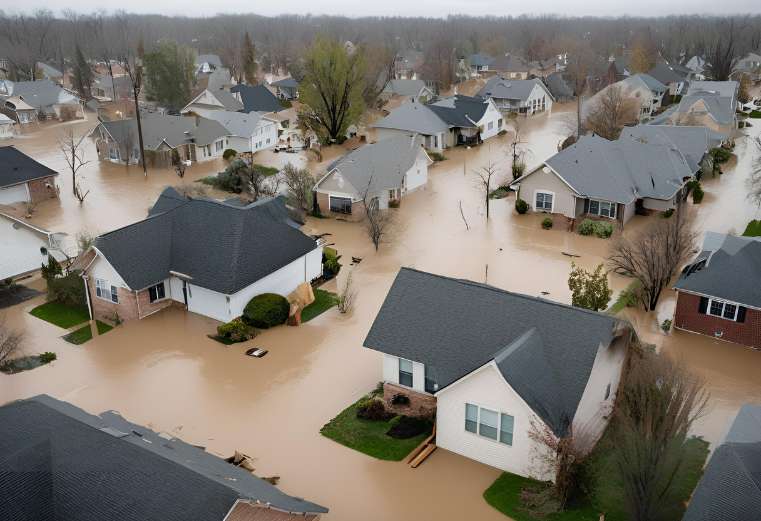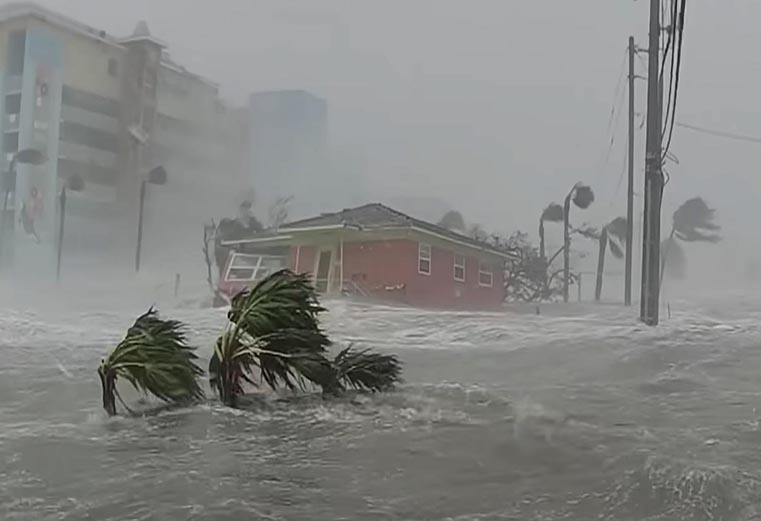Across the United States, an unprecedented surge in flooding emergencies has emerged as a pressing concern. From urban centers to rural areas, intense rainfall and flash floods are challenging infrastructure, stretching resources, and forcing communities to rethink their resilience. The scale and frequency of these flood events aren’t isolated occurrences but rather part of a broader trend pointing to changing climate dynamics. This shift toward more frequent, severe flooding is a wake-up call about the potential for increased water-related disasters and serves as a critical reminder of the urgent need for adaptive measures.
The Role of Climate Change in Rising Flood Emergencies
The scientific consensus points to climate change as a central factor behind these frequent flood emergencies. As temperatures rise, the atmosphere can hold more moisture, leading to heavier rainfall and extreme weather events. According to research by the National Oceanic and Atmospheric Administration (NOAA), precipitation intensity has increased across the United States, with specific regions like the Midwest and Northeast experiencing some of the most drastic spikes.
Warmer temperatures also exacerbate snowmelt in colder regions, adding to the volume of water flowing into rivers and streams, ultimately overwhelming existing flood control measures. This one-two punch of intense rain and accelerated snowmelt drives up the risk of flash floods, river flooding, and even long-term inundations in low-lying areas. Climate change projections suggest that, without intervention, these flooding events will only become more common and severe in the coming years.
Impacted Areas: A Geographic Breakdown
 While floods have become a national issue, certain regions face higher risks due to unique geographic, climatic, and infrastructural factors. The Midwest, for instance, has seen a sharp increase in river flooding, particularly along the Mississippi and Missouri Rivers. Heavy rains, combined with insufficient drainage and aged levees, make this area susceptible to widespread water damage. Cities in this region, like St. Louis and Des Moines, are grappling with the costs of repeated repairs and the loss of property and resources.
While floods have become a national issue, certain regions face higher risks due to unique geographic, climatic, and infrastructural factors. The Midwest, for instance, has seen a sharp increase in river flooding, particularly along the Mississippi and Missouri Rivers. Heavy rains, combined with insufficient drainage and aged levees, make this area susceptible to widespread water damage. Cities in this region, like St. Louis and Des Moines, are grappling with the costs of repeated repairs and the loss of property and resources.
In the southern United States, coastal flooding is an ongoing challenge. The combination of sea-level rise and stronger storms is a significant concern in states like Texas, Louisiana, and Florida. Coastal cities such as Miami and Houston experience routine flooding during storm surges, hurricanes, and even “sunny day” flooding caused by high tides. These areas face added challenges as rising sea levels slowly encroach upon low-lying communities, often putting valuable real estate and vital infrastructure at risk.
The Western US also faces its own version of water-related emergencies. In states like California, wildfires and drought have altered the landscape, reducing vegetation that would normally absorb rainfall. This creates a perfect setting for flash floods when heavy rain hits wildfire-scarred areas. Even a moderate amount of rain can quickly turn into a dangerous flood hazard in areas left barren after large wildfires.
Economic and Social Consequences of Flooding
Floods bring a cascade of economic and social impacts. Direct costs include repairs to homes, businesses, roads, and public infrastructure like schools and hospitals. However, these visible damages are only the tip of the iceberg. The broader economic implications often include lost productivity, disrupted supply chains, and increased insurance premiums.
Homeowners in flood-prone areas are finding it increasingly difficult to secure affordable insurance as insurers adjust to the rising frequency and cost of flood claims. This creates a feedback loop: as flooding worsens, insurance rates climb, placing a greater financial burden on homeowners, especially those who can least afford it. In some cases, insurance companies are withdrawing from high-risk areas altogether, leaving residents to bear the full brunt of repair and recovery costs on their own.
Socially, floods disrupt communities, displacing families and, in the worst cases, leading to loss of life. Mental health repercussions from these traumatic events often go underreported, though they are significant. People who lose their homes, livelihoods, or even loved ones to flooding frequently experience stress, anxiety, and depression. Recovery can be a long, emotionally taxing process, especially as individuals grapple with the possibility of future events.
Infrastructure Challenges and the Need for Resilient Solutions
The uptick in flooding emergencies exposes the vulnerability of America’s infrastructure, much of which is not designed to handle such intense weather events. Levees, dams, and stormwater systems are often outdated and strained beyond capacity. Many of these systems were built based on historical weather patterns, not the new climate reality, leaving communities exposed to flooding risks that continue to evolve.
Urban areas face specific infrastructure challenges as rapid development has covered large swaths of land with impermeable surfaces like concrete and asphalt, which prevent water from soaking into the ground. This results in quicker runoff and increases the likelihood of urban flooding. Many cities are now recognizing the need for adaptive measures, such as permeable pavement, green roofs, and expanded stormwater systems to better manage heavy rainfall.
Meanwhile, rural areas contend with eroding soil and insufficient water diversion systems. Improved land management practices, like reforestation and sustainable farming techniques, can help increase the landscape’s ability to absorb rainwater. However, these solutions require substantial investment and long-term commitment, which can be challenging for smaller communities with limited resources.
A Call for Action: Investing in Preparedness and Adaptation
As the frequency and severity of flooding increase, government and local communities are under growing pressure to invest in flood preparedness and climate adaptation. Federal and state governments are beginning to fund initiatives focused on fortifying infrastructure and creating more resilient communities. Programs like FEMA’s Hazard Mitigation Grant Program (HMGP) aim to reduce disaster risk by funding projects that improve resilience to flooding and other hazards. These include fortifying levees, building new flood-resistant infrastructure, and implementing early warning systems for residents.
Local communities are also taking action through strategies like restoring wetlands, which act as natural flood barriers by absorbing large amounts of water. Additionally, many cities are working to expand green spaces, which help with flood control by providing areas where excess water can pool harmlessly, reducing strain on stormwater systems.
Individuals, too, are playing a role in mitigating flood risks by adopting practices like elevating homes, creating rain gardens, and using rain barrels. Although these efforts may seem small in the face of larger climate forces, they can make a meaningful difference, especially when combined with broader community and governmental initiatives.





